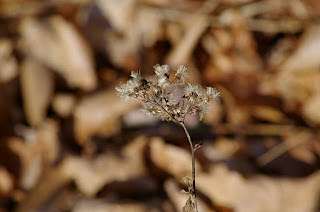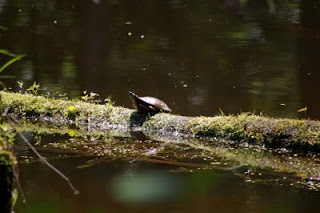
A few days ago, I had the luxury of a long walk without the toddler or the dogs. The forest has been stripped down to the bleakness of winter, which officially starts next week. Deceptively delicate featherings of moss claimed the unwanted surfaces – rocks and wood. Reproduction is always in progress somewhere. The fawns which are forming inside does represent high maternal investment, while the clusters of seeds held aloft awaiting their turn for dispersal are much cheaper.

Insects crawled and stumbled about in the sun-warmed leaf litter. The forest was still waiting for a festive carpet of snow to shield the forest floor and its occupants from the shifting weather and temperatures (today the air is dotted with snow, making a thin covering that’s rough with leaves and spiky grass).
Casual birding is a feast or famine enterprise depending on where the mixed feeding flocks are foraging or where the crows are congregating. My walk was without avian accompaniment, until I remembered that there are almost always a few patrons at the bird feeder next door. A fact not always lost on the nonhuman forest residents who are interested in song birds. Woodpecker and nuthatches hung back in the woods, while bolder chickadees shuttle back and forth through the yard. Then some titmice appear. To me, titmice suggest mini jays in attitude and headdress.


















































